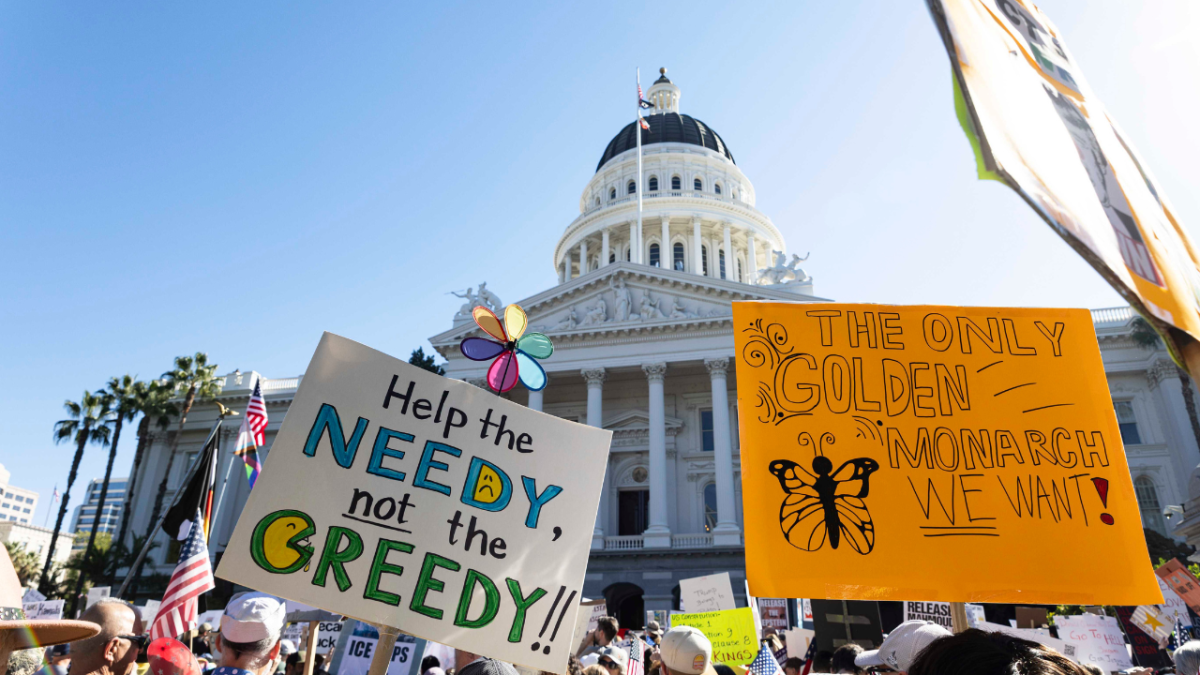Communication comes with the desire to do so
October 24, 2007
“What we’ve got here is a failure to communicate.” –The Captain in “Cool Hand Luke” Sacramento State leaders have come up with an intriguing explanation for the last two years’ conflicts. The cause of the various flare-ups from the re-branding debacle through the students’ Recreation and Wellness Center assessment, course cancellations, junior faculty pay irregularities, bookstore privatization, raids on instructional funds, no-confidence votes and now big game imbroglio has been a lack of communication – a failure of “transparency.” That’s a favorite among administrators for accounting for discontent, as the prison warden in “Cool Hand Luke” put it in the line above. What’s surprising is that some faculty leaders at Sac State have now joined the administration in the misconception.
Faculty Senate Chair Bruce Bikle announced in a memo of Sept. 13 that the Senate Executive Committee has joined the administration in retaining the services of “professional mediators and facilitators” from the campus’s Center for Collaborative Policy to remedy the problem. Before tackling “issues related to campus governance,” he explained, the Executive Committee thought a better understanding of different views about “what is broken” on campus was needed. The mediation service will conduct “assessment interviews” with faculty, students and staff to find out, and distribute a briefing memo to the campus in November.
Why outside assessors? I wondered. What’s wrong with the specifics supplied in last April’s No-Confidence motion, approved by 78 percent of the faculty? And why wait until November when we already have the recommendations of the senate committee that met all summer? Why ask, finally, “what’s broken” – as if something had malfunctioned in our standard operating procedures?
The problem, rather, is that our standard procedures are under assault by new notions about what a university should be. We don’t have a failure to communicate. We have a conflict between two models of higher education. The old liberal arts model, sanctioned by the 1960 Master Plan, is familiar to Californians. The new model favored by President Gonzalez and concocted in the half-light of board rooms and managerial offices is unfamiliar.
The old model is one in which students have ready access to college, the classroom is the central destination for students and faculty, faculty spend time with students and have authority over curriculum, tenure provides academic freedom, and power is dispersed. The new model, for all the talk about a Destination Campus, is one in which classroom resources are diverted into marketing, administrative display and peripheral building projects, classes are crowded when not canceled, the campus becomes a site of capital accumulation for private franchises, curriculum decisions are preempted by campus budget cuts, academic freedom is non-existent for half the faculty that are part-timers, tuition hikes limit access but are necessary to pay for things like skyrocketing managers’ salaries, and power is centralized on the corporate design. The old model sought to educate students broadly; the new trains them for local, entry-level jobs.
What’s occurring at Sac State is a larger conflict, then, of visions and priorities – a clash between the demands of the public and a corporatized university. There is nothing gained by obscuring this and much, I think, that’s lost. Moreover, as long as the president refuses to alter his agenda, the only course forward is argument, the open airing of differences and, yes, struggles to put the University back into Sac State. We, members of a major sphere of public discourse, should be able to handle the job. Professional mediators can help if they aid in this, not if their “assessments” displace ours.
“Cool Hand Luke” knew that the failure to communicate had nothing to do with a balked desire for dialogue and everything to do with the authority’s effort to impose his will. I hope our senate leaders haven’t missed the irony.
Jeff Lustig is a professor in the government department. The views expressed in this column are necessarily the same views of The State Hornet.

























































































































